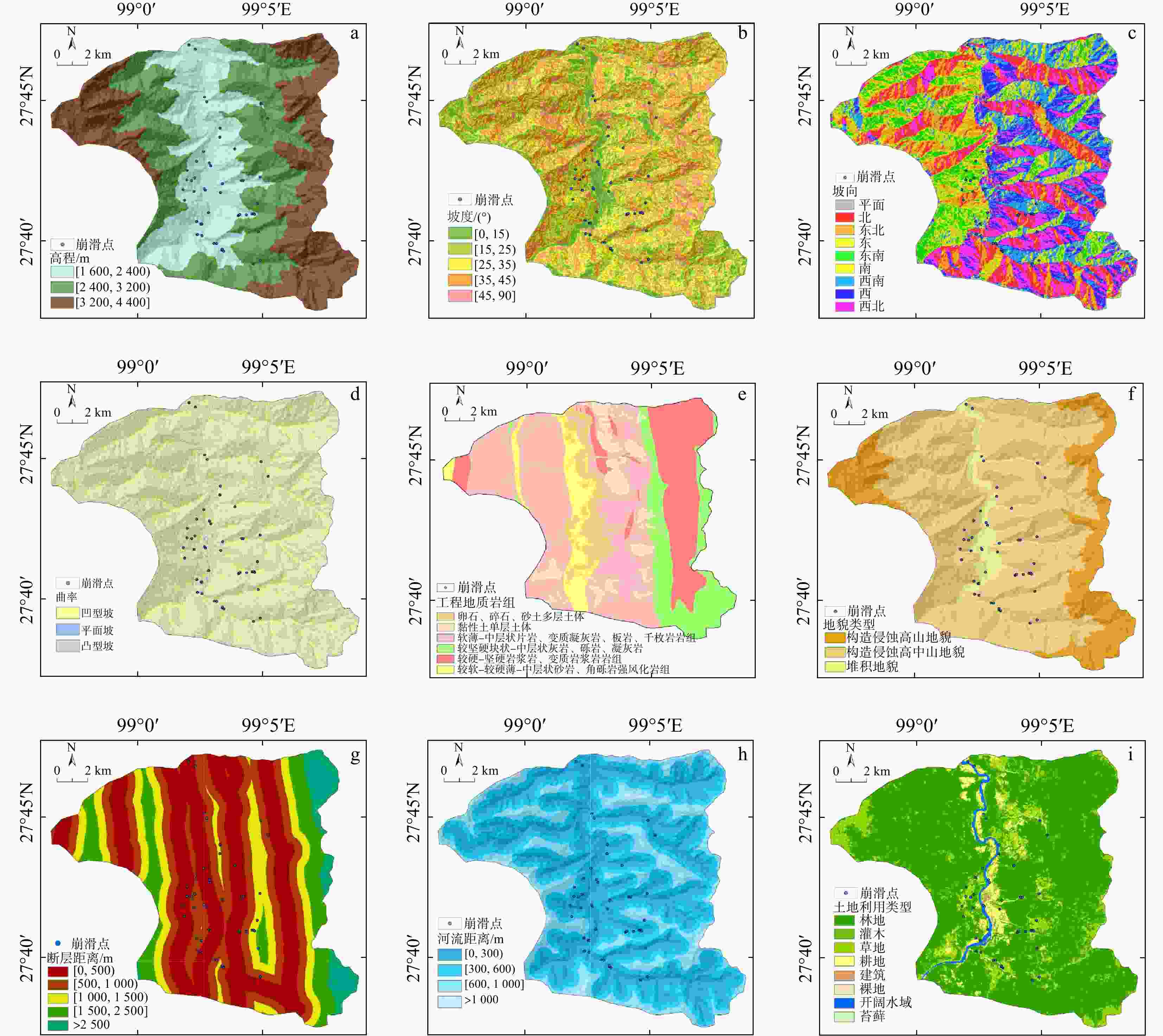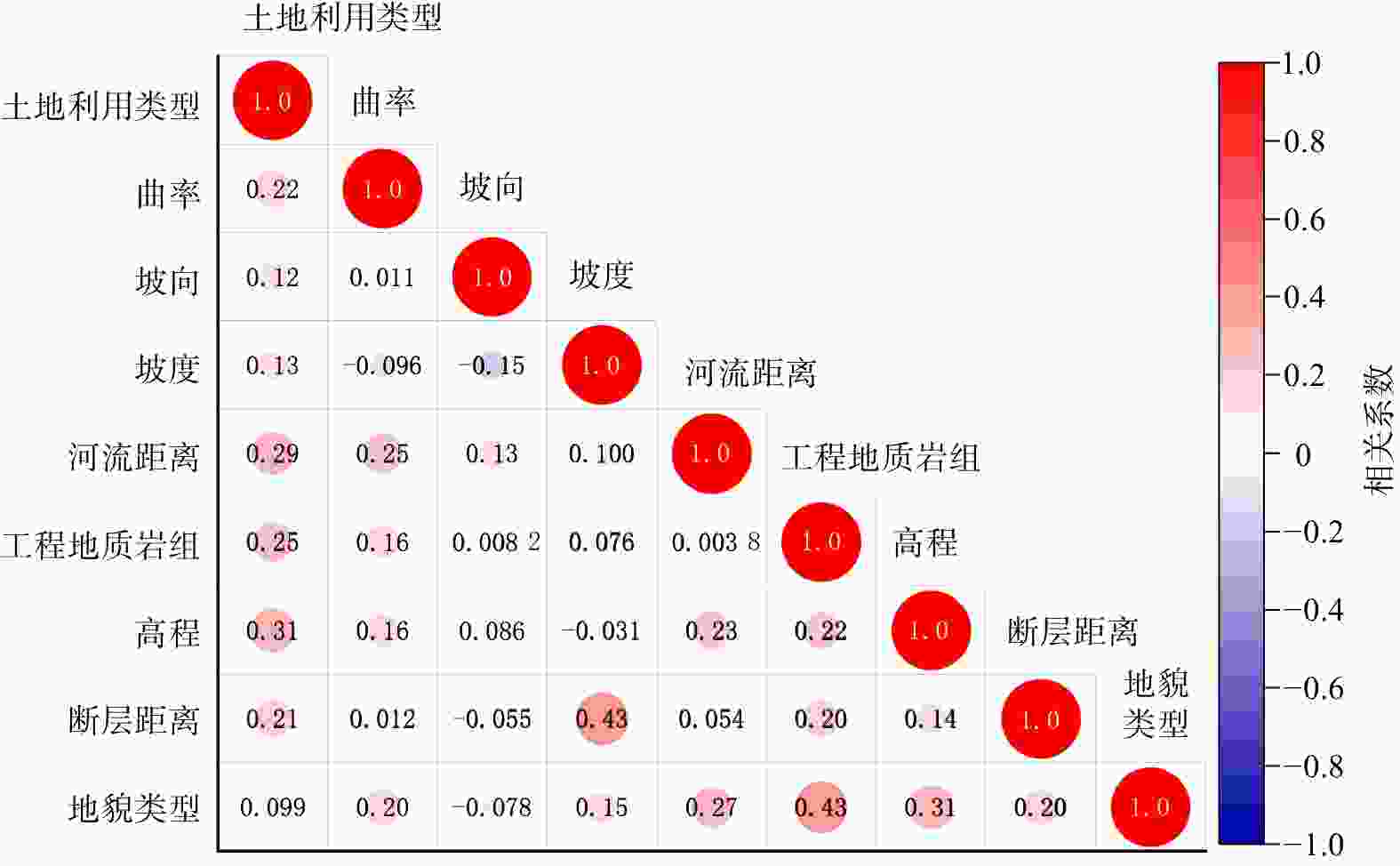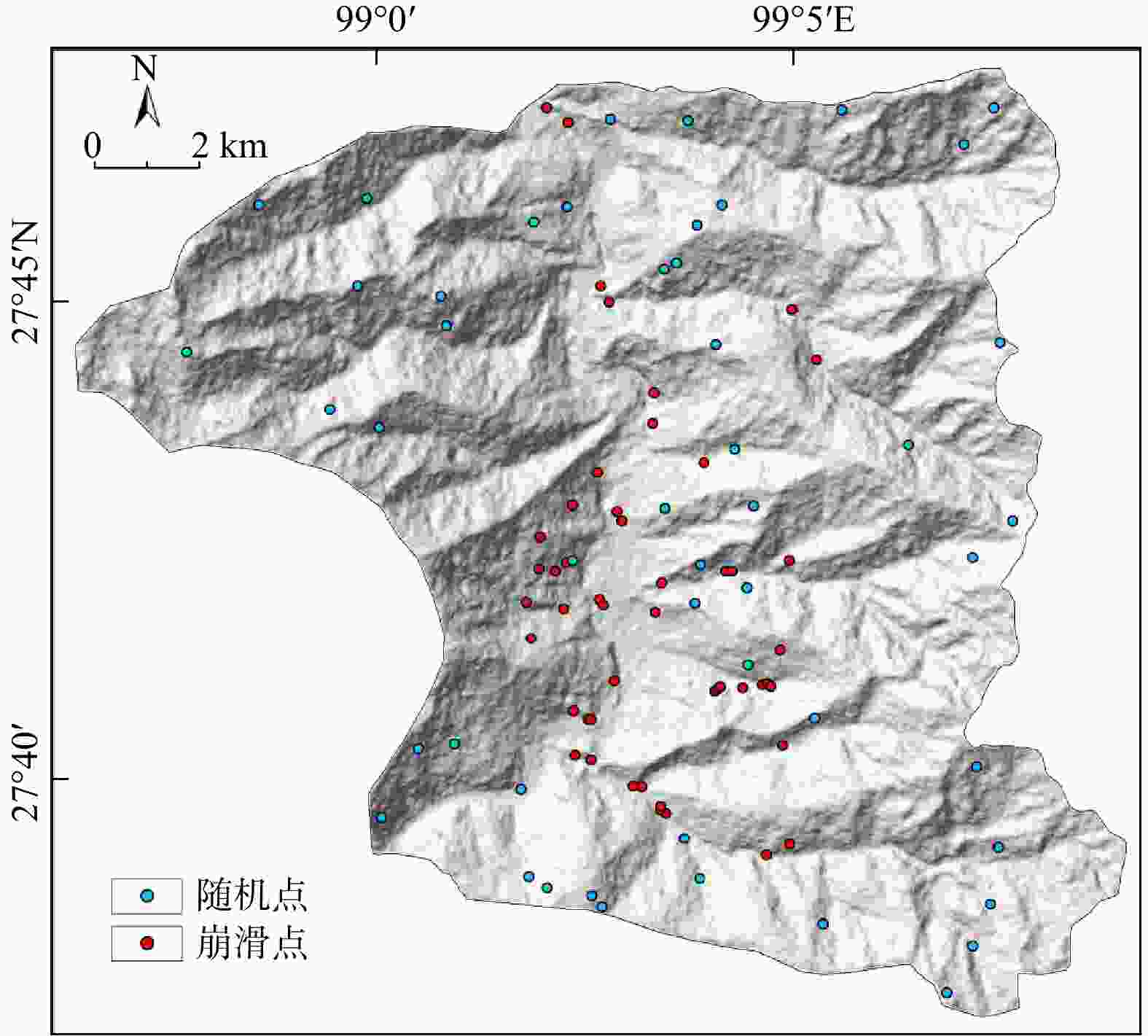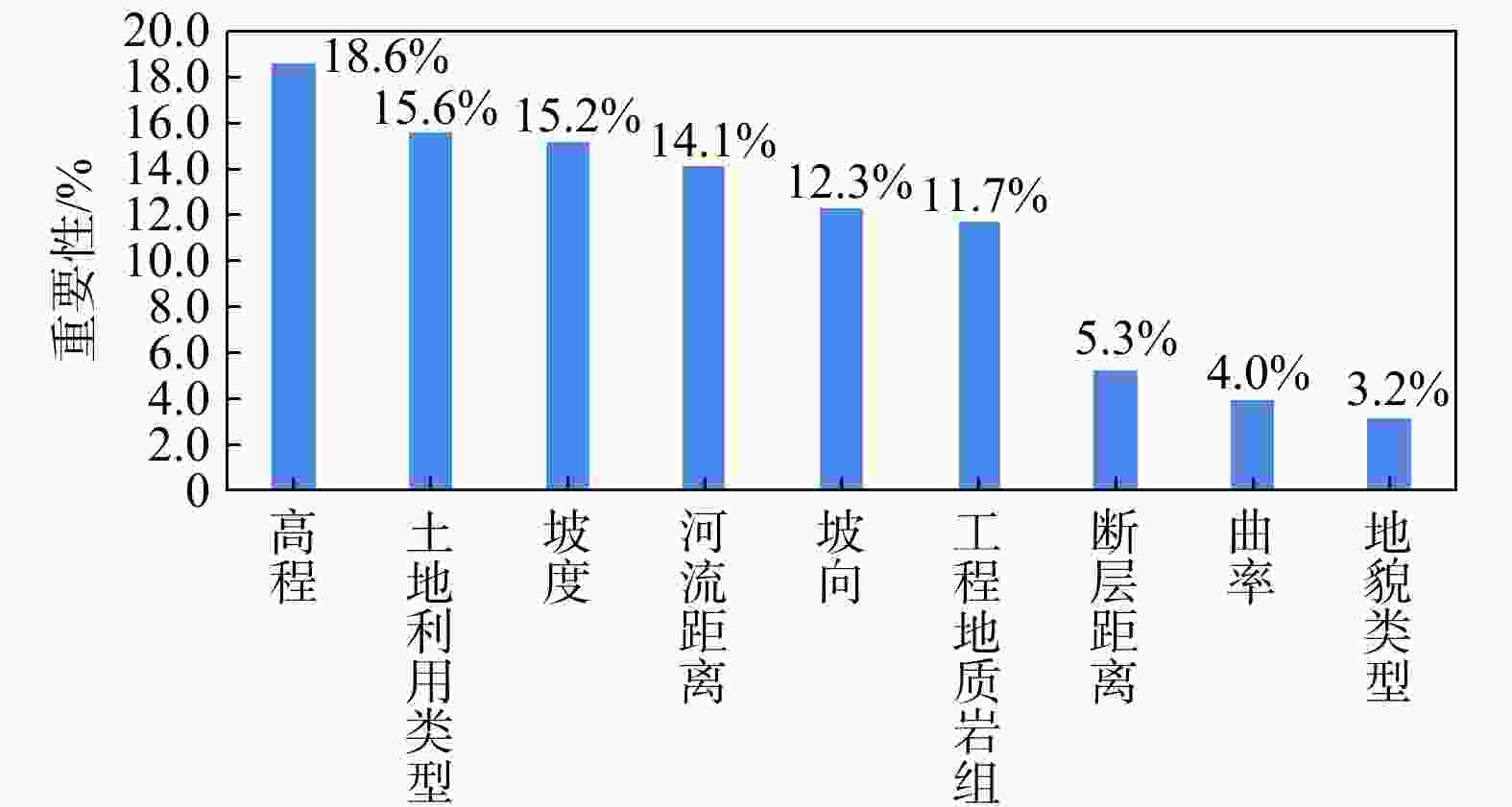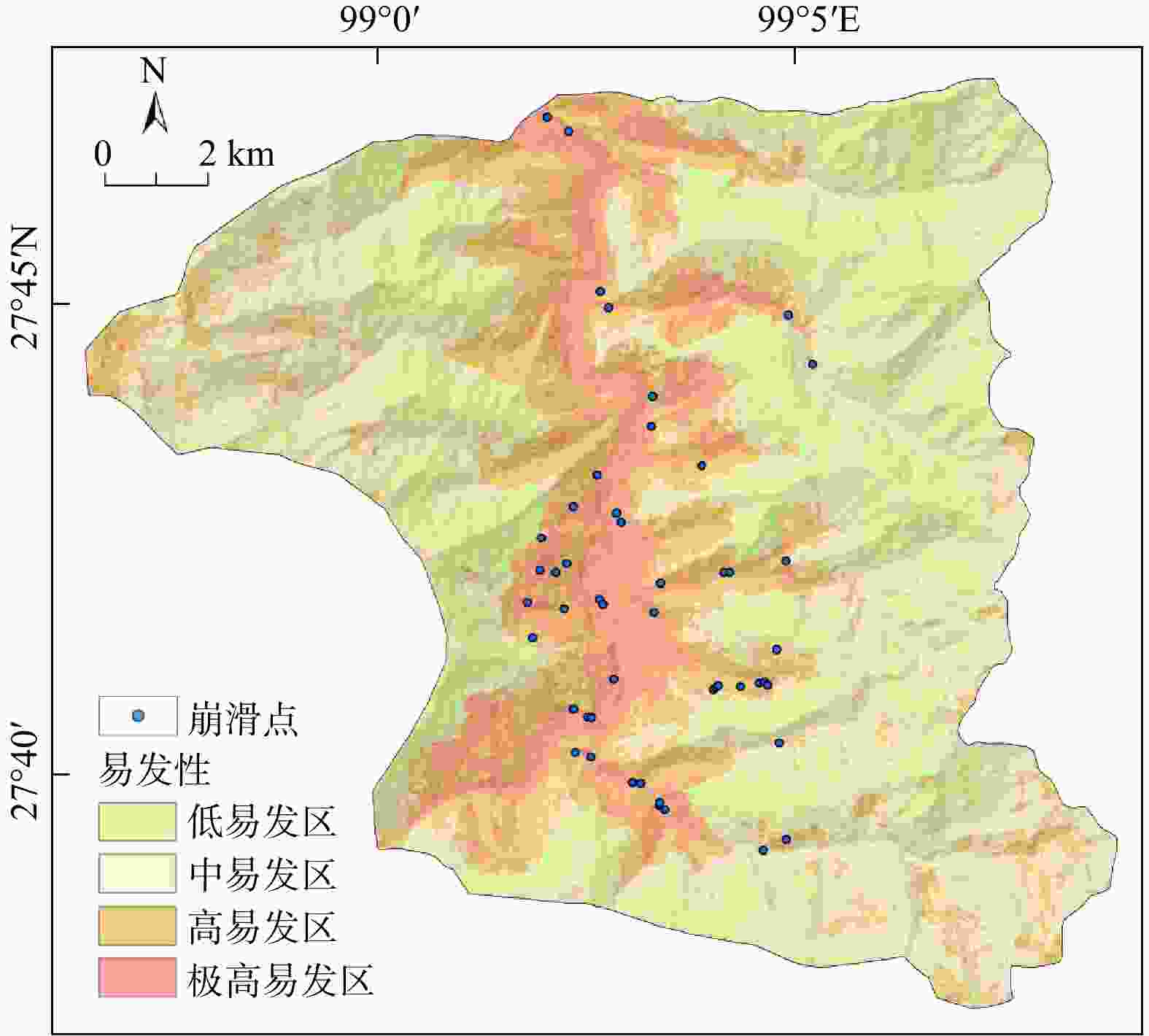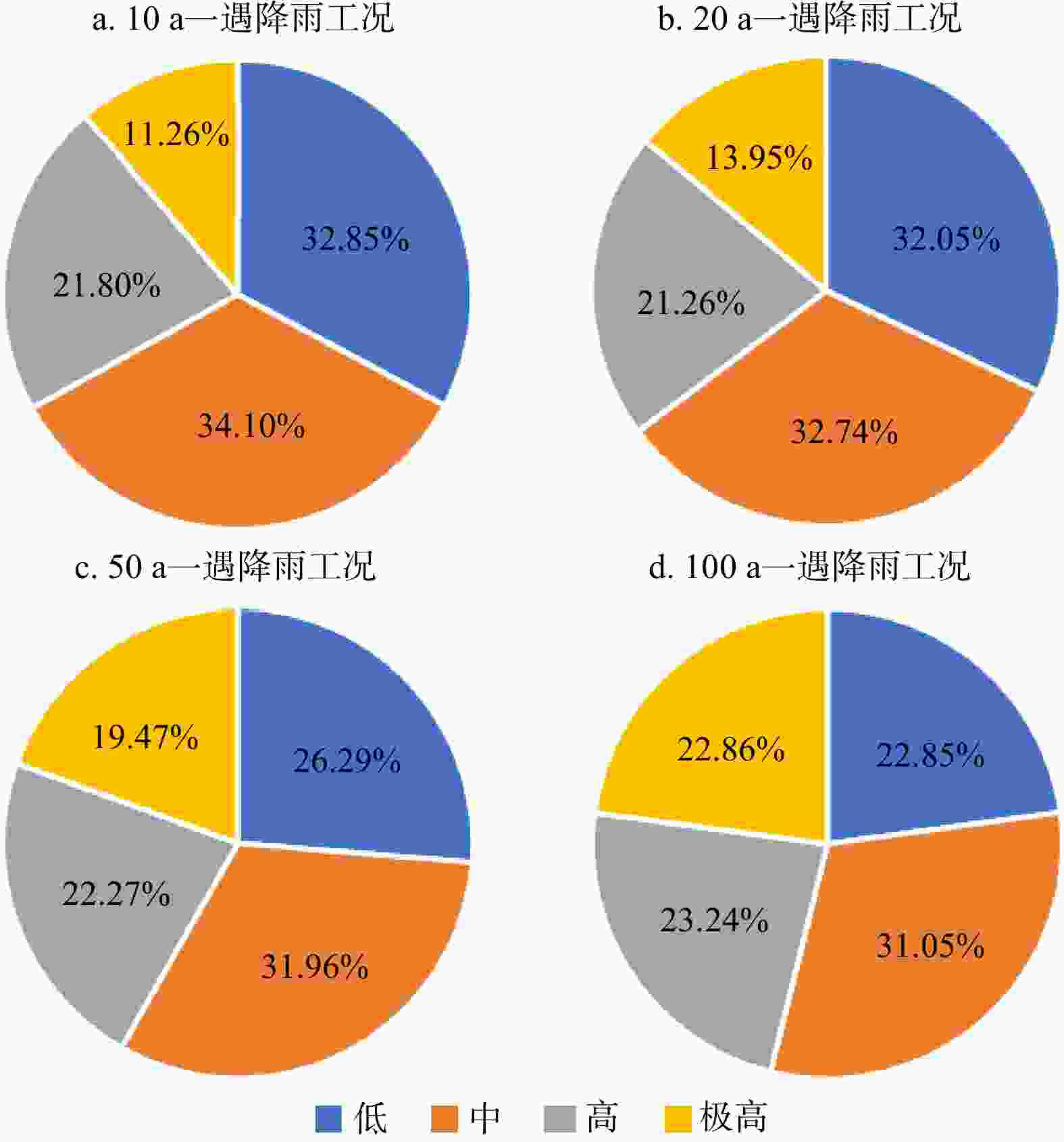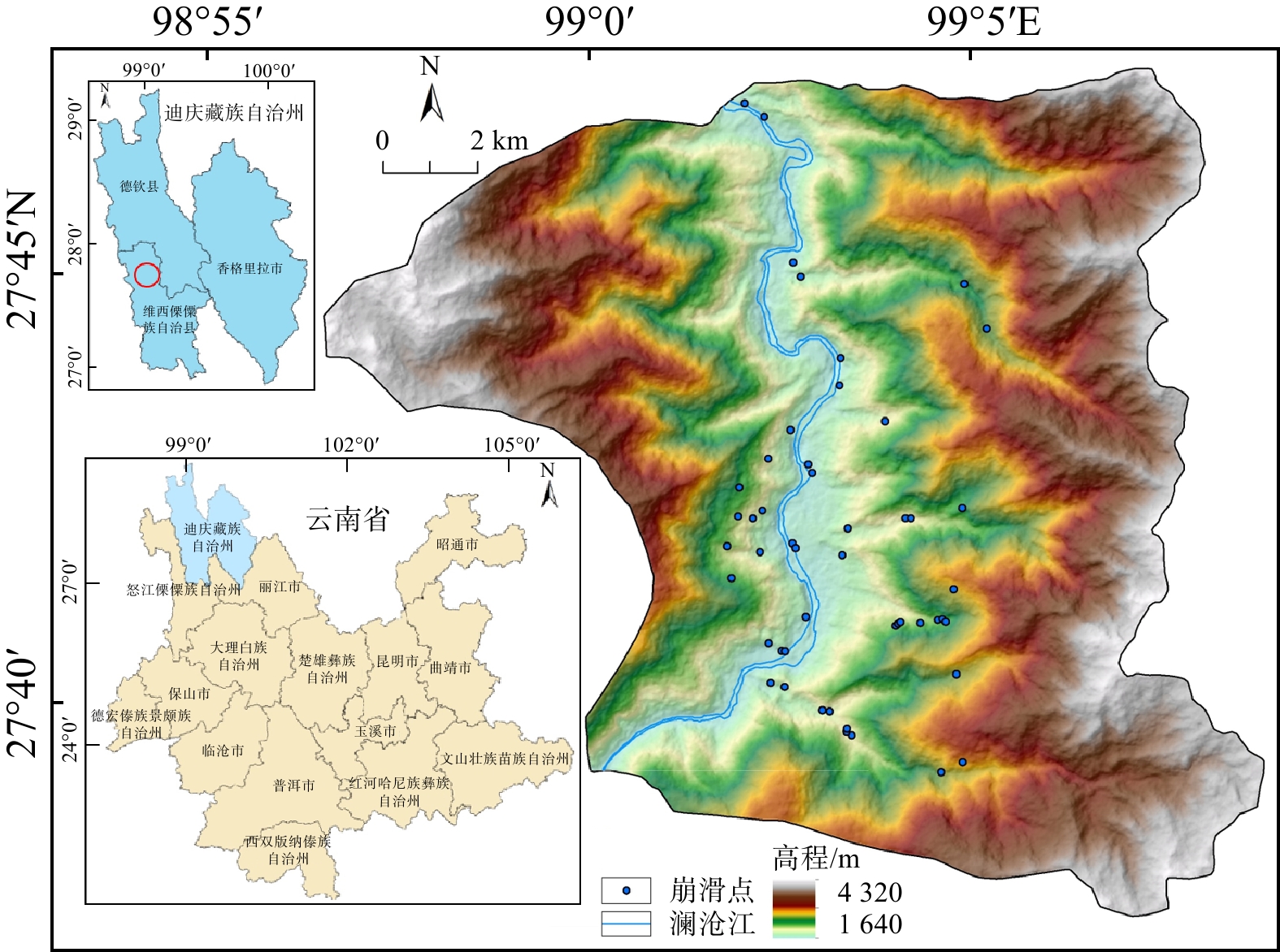Risk assessment of landslide geological hazards under different rainfall conditions based on the Pearson Ⅲ curves
-
摘要:
降雨是诱发滑坡崩塌等地质灾害的重要因素之一,极大地威胁着群众的生命财产安全,为有依据地采取防治措施以及避险搬迁。以云南省维西县叶枝镇为研究区,选取高程、土地利用类型、坡度、坡向、地貌类型、工程地质岩组、河流距离、断层距离、曲率9个评价因子,以栅格单元作为评价单元,采用随机森林算法和加权信息量法对评价因子进行权重分析,作出易发性评价,并在此基础上选择降雨量作为危险性评价因子,通过计算和皮尔逊Ⅲ型曲线预测研究区10 a一遇、20 a一遇、50 a一遇、100 a一遇的降雨量,得出4种不同的降雨工况,作出危险性评价。由统计所得,将易发性评价结果按照自然间断点法分成低、中、高、极高易发区4个等级,分别占据研究区面积32.80%,34.02%,21.96%,11.22%,用ROC曲线对其作精度验证,
AUC 值为89.2%;基于4种降雨工况条件下的地质灾害危险性评价结果,分别分出低、中、高、极高危险区4种等级,并对评价结果进行了对比分析。通过与实际调查情况对比,本研究得出的崩滑地质灾害危险性评价结果与实际情况较为吻合,能够为防灾减灾、避险搬迁提供合理依据。Abstract:Objective Rainfall is one of the important factors that induce geological disasters, such as landslides and collapses, posing a great threat to the safety of people's lives and property. Therefore, it is necessary to take effective prevention and control measures as well as to avoid and relocate.
Methods This study takes Yezhi Town, Weixi County, Yunnan Province as the study area, and the grid unit is used as the evaluation unit. Nine evaluation factors, including elevation, land use type, slope, aspect, elevation, landform type, engineering geological rock group, land use type, distance from river, distance from fault, and curvature were selected. The random forest algorithm and weighted information method were used to analyze the weight of evaluation factors, and a susceptibility evaluation was also made. Based on this, rainfall was selected as the risk assessment factor. By calculating and predicting the rainfall in the study area with Pearson Ⅲ curve, rainfall in the study area was predicted for every 10 years, 20 years, 50 years, and 100 years, and a risk assessment was obtained.
Results According to statistics, the susceptibility assessment results are divided into four levels using the natural discontinuity method: low, medium, high, and extremely high-susceptibility areas, which account for 32.80%, 34.02%, 21.96%, and 11.22% of the study area respectively. The ROC curves were used to verify the accuracy, and the
AUC value was 89.2%.Conclusion By comparing the actual investigation situation, the landslide and collapse risk assessment results under different rainfall conditions are highly consistent with the actual situation. This study provides a basis for reasonable disaster prevention and mitigation, as well as risk avoidance and relocation.
-
表 1 加权信息量
Table 1. Weighted information scale
评价因子 因子分级 栅格数量 崩滑数量 信息量值 权重 地貌类型 构造侵蚀高山地貌 111746 0 0.0000 0.0555 堆积地貌 36567 8 0.9233 构造侵蚀高中山地貌 415576 41 0.1269 土地利用类型 林地 454821 21 − 0.6303 0.1570 灌木 875 0 0.0000 草地 73323 20 1.1459 耕地 16868 0 0.0000 建筑 2004 1 1.7499 裸地 8943 5 1.8636 开阔水域 8198 2 1.0343 苔藓 7 0 0.0000 断层距离/m [0,500) 200491 22 0.2333 0.0555 [500, 1000 )156470 20 0.3859 [ 1000 ,1500 )95877 6 − 0.3283 [ 1500 ,2500 ]78132 1 − 1.9154 > 2500 32919 0 0.0000 高程/m [ 1600 ,2400 )172759 42 1.0288 0.1832 [ 2400 ,3200 )212125 7 − 0.9682 [ 3200 ,4400 ]179001 0 0.0000 工程地质岩组 黏性土单层土体 38419 9 0.9917 0.1008 较软-较硬薄-中层状砂岩、角砾岩强风化岩组 44628 8 0.7241 卵石、碎石、砂土多层土体 43376 12 1.1580 软薄-中层状片岩、变质凝灰岩、板岩、千枚岩岩组 239541 18 − 0.1453 较硬-坚硬岩浆岩、变质岩浆岩岩组 114498 2 − 1.6044 较坚硬块状-中层状灰岩、砾岩、凝灰岩 83427 0 0.0000 坡度/(°) [0,15) 61903 7 0.2574 0.1570 [15,25) 113569 13 0.2696 [25,35) 175621 16 0.0414 [35,45) 148755 4 − 1.1789 [45,90] 60707 9 0.5283 坡向 平面 1748 0 0.0000 0.1176 北(0°~10°) 41163 0 0.0000 东北 65200 2 − 1.0472 东 44842 3 − 0.2674 东南 60243 5 − 0.0518 南 68086 13 0.7813 西南 79290 9 0.2612 西 69350 2 − 1.1089 西北 86134 6 − 0.2270 北(350°~0°) 44499 3 − 0.2597 曲率 凹型坡 279981 32 0.2740 0.0555 平面坡 5519 0 0.0000 凸型坡 278385 17 − 0.3528 河流距离/m [0,300) 244079 43 0.7067 0.1176 [300,600) 185425 5 − 1.1702 [600, 1000 ]125862 1 − 2.3921 > 1000 8523 0 0.0000 表 2 易发性评价结果统计
Table 2. Statistical of the susceptibility evaluation results
易发性等级 面积比例/% 崩滑数量 崩滑比例/% 灾害密度/(处·km−2) 低 32.80 1 2.0 0.01 中 34.02 3 6.1 0.03 高 21.96 16 32.7 0.35 极高 11.22 29 59.2 1.15 表 3 2010-2020 a各年月最大降雨量
Table 3. Maximum rainfall in each month from 2010 to 2020
年份 2010 2011 2012 2013 2014 2015 2016 2017 2018 2019 2020 月最大降
雨量/mm302.9 159.6 139.3 122.9 197.7 176.5 223.7 223.5 213.6 157.6 191.4 表 4 K值结算结果
Table 4. Results of K value settlement
年份 降雨量X/mm ${K}=X{/\overline{X}} $ 2010 302.9 1.580073 2011 159.6 0.832551 2012 139.3 0.726656 2013 122.9 0.641106 2014 197.7 1.031299 2015 176.5 0.920709 2016 223.7 1.166927 2017 223.5 1.165884 2018 213.6 1.114241 2019 157.6 0.822118 2020 191.4 0.998435 合计 2108.7 表 5 叶枝镇不同概率的月最大降雨量
Table 5. Monthly maximum rainfall with different probabilities in Yezhi Town
概率 $\phi$ $ {A}=\overline{X}(\phi{C}_{{\mathrm{v}}}+1) $/mm 10 a一遇(10%) 1.34 258.5 20 a一遇(5%) 1.86 284.4 50 a一遇(2%) 2.50 316.2 100 a一遇(1%) 2.96 339.2 注:ϕ为离散系数;A为各概率下的月最大降雨量;Cv为变差系数 -
[1] 黄鑫,吴珍云,丁德建,等. 基于信息量-逻辑回归模型的江西省婺源县地质灾害易发性评价[J]. 东华理工大学学报(自然科学版),2023,46(3):259-268. doi: 10.3969/j.issn.1674-3504.2023.03.006HUANG X,WU Z Y,DING D J,et al. Geological hazard susceptibility evaluation of Wuyuan County in Jiangxi Province based on information-logistic regression model[J]. Journal of East China University of Technology(Natural Science),2023,46(3):259-268. (in Chinese with English abstract doi: 10.3969/j.issn.1674-3504.2023.03.006 [2] 崔玉龙,朱路路,徐敏,等. 基于环境因子优化TSES法选择负样本及其在滑坡易发性评价中的应用[J]. 地质科技通报,2024,43(3):192-199.CHUI Y L,ZHU L L,XU M,et al. Optimizing TSES method based on the environmental factors to select negative samples and its application in landslide susceptibility evalution[J]. Bulletin of Geological Science and Technology,2024,43(3):192-199. (in Chinese with English abstract [3] 王璇,师芸,陈浩. CF耦合LR模型的地质灾害易发性评价[J]. 测绘通报,2022(11):112-117.WANG X,SHI Y,CHEN H. Evaluation of geological hazard susceptibility based on certainty factors and coupling logistic regression[J]. Surveying and Mapping Bulletin,2022(11):112-117. [4] 林荣福,刘纪平,徐胜华,等. 随机森林赋权信息量的滑坡易发性评价方法[J]. 测绘科学,2020,45(12):131-138.LIN R F,LIU J P,XU S H,et al. Landslide susceptibility evaluation method of stochastic forest weighted information[J]. Surveying and Mapping Science,2020,45(12):131-138 . [5] 郭佳,赵之星,刘志奇,等. 结合信息量与AHP模型的阳泉市矿区地质灾害风险评价[J]. 测绘通报,2022(11):101-105.GUO J,ZHAO Z X,LIU Z Q,et al. Geological hazard risk assessment of Yangquan mining area combined with information content and AHP model[J]. Surveying and Mapping Bulletin,2022(11):101-105. (in Chinese with English abstract [6] 严明,谢婉丽,何亚南,等. 基于极值降雨假设法的城镇地质灾害风险性评价耦合模型研究:以安康市岚皋县官元镇为例[J]. 灾害学,2023,38(4):219-227.YAN M,XIE W L,HE Y N,et al. Research on coupling model of urban geological hazard risk assessment based on extreme rainfall scenarios:A case study of Guanyuan Town,Langao County,Ankang City[J]. Science of Disaster,2023,38(4):219-227. (in Chinese with English abstract [7] 范雅婕,范宣梅,方成勇. 基于栅格最大值法的县域综合地质灾害建模[J]. 地质科技通报,2022,41(2):197-208.FAN Y J,FAN X M,FANG C Y,Modeling of county comprehensive geological hazards based on grid maximum method[J]. Bulletin of Geological Science and Technology,2022,41(2):197-208. (in Chinese with English abstract [8] 温鑫,范宣梅,陈兰,等. 基于信息量模型的地质灾害易发性评价:以川东南古蔺县为例[J]. 地质科技通报,2022,41(2):290-299.WEN X,FAN X M,CHEN L,et al. Evaluation of geological hazard susceptibility based on information quantity model:Taking Gulin County,southeastern Sichuan as an example[J]. Bulletin of Geological Science and Technology,2022,41(2):290-299. (in Chinese with English abstract [9] BI X J,QIANG F,LEI H,et al. Analysis and evaluation of extreme rainfall trends and geological hazards risk in the lower Jinshajiang River[J]. Applied Sciences,2023,13(6):4021. doi: 10.3390/app13064021 [10] 盛逸凡,李远耀,徐勇,等. 基于有效降雨强度和逻辑回归的降雨型滑坡预测模型[J]. 水文地质工程地质,2019,46(1):156-162.SHENG Y F,LI Y Y,XU Y,et al. Rainfall landslide prediction model based on effective rainfall intensity and logistic regression[J]. Hydrogeology Engineering Geology,2019,46(1):156-162 . (in Chinese with English abstract [11] 姬永涛,王鲜,郝业,等. 基于斜坡单元的陕西省城镇地质灾害风险调查评价:以西安市蒋村街道为例[J]. 灾害学,2022,37(4):211-219. doi: 10.3969/j.issn.1000-811X.2022.04.032JI Y T,WANG X,HAO Y,et al. Investigation and evaluation of urban geological hazard risk based on slope unit in Shaanxi Province:A case study of Jiangcun Street in Xi'an City[J]. Science of Disaster,2022,37(4):211-219. (in Chinese with English abstract doi: 10.3969/j.issn.1000-811X.2022.04.032 [12] 马增. 基于皮尔逊Ⅲ型曲线对科米卡矿区的降雨量计算[J]. 采矿技术,2019,19(3):141-142. doi: 10.3969/j.issn.1671-2900.2019.03.046MA Z. Rainfall calculation in Comica mining area based on Pearson type III curve[J]. Mining Technology,2019,19(3):141-142. (in Chinese) doi: 10.3969/j.issn.1671-2900.2019.03.046 [13] SARMA P C,DEY A,KRISHNA M A. Influence of digital elevation models on the simulation of rainfall-induced landslides in the hillslopes of Guwahati,India[J]. Engineering Geology,2020,268:105523. [14] QIANG Z,HU J,PENG C,et al. A new approach to assess landslide susceptibility based on slope failure mechanisms[J]. Catena,2021,204:105388. doi: 10.1016/j.catena.2021.105388 [15] XIAOYI W,YUANBAO S,WEI C,et al. Analysis of geological hazard susceptibility of landslides in muli county based on random forest algorithm[J]. Sustainability,2023,15(5):4328. doi: 10.3390/su15054328 [16] 方匡南,吴见彬,朱建平,等. 随机森林方法研究综述[J]. 统计与信息论坛,2011,26(3):32-38. doi: 10.3969/j.issn.1007-3116.2011.03.006FANG K N,WU J B,ZHU J P,et al. A review of random forest methods[J]. Statistics and Information Forum,2011,26(3):32-38. (in Chinese with English abstract doi: 10.3969/j.issn.1007-3116.2011.03.006 [17] 刘艳辉,黄俊宝,肖锐铧,等. 基于随机森林的福建省区域滑坡灾害预警模型研究[J]. 工程地质学报,2022,30(3):944-955.LIU Y H,HUANG J B,XIAO R H,et al. Research on regional landslide hazard warning model based on random forest in Fujian Province[J]. Journal of Engineering Geology,2022,30(3):944-955. (in Chinese with English abstract [18] 杨硕,李德营,严亮轩,等. 基于随机森林模型的乌江高陡岸坡滑坡地质灾害易发性评价[J]. 安全与环境工程,2021,28(4):131-138.YANG S,LI D Y,YAN L X,et al. Evaluation of geological hazard susceptibility of high and steep bank slope of Wujiang River based on random forest model[J]. Safety and Environmental Engineering,2021,28(4):131-138. (in Chinese with English abstract [19] 吴润泽,胡旭东,梅红波,等. 基于随机森林的滑坡空间易发性评价:以三峡库区湖北段为例[J]. 地球科学,2021,46(1):321-330.WU R Z,HU X D,MEI H B,et al. Spatial vulnerability assessment of landslides based on random forest:A case study of the Hubei section of the Three Gorges Reservoir area[J]. Earth Science,2021,46(1):321-330. (in Chinese with English abstract [20] 何佳君. 基于时序InSAR技术的金沙江上游滑坡早期识别与易发性研究[D]. 南昌:东华理工大学,2022.HE J J. Early identification and susceptibility of landslides in the upper reaches of Jinsha River based on time series InSAR technology[D]. Nanchang:East China University of Technology,2022. (in Chinese with English abstract [21] 盖侨侨,孙倩,张宁,等. 融合时序InSAR形变的白银市地质灾害易发性评价[J]. 武汉大学学报(信息科学版),2024,49(8):1434-1443.GAI Q Q,SUN Q,ZHANG N,et al. Geological hazard susceptibility evaluation of Baiyin City based on time-series InSAR deformation[J]. Geomatic and Information Science of Wuhan University,2024,49(8):1434-1443. (in Chinese with English abstract [22] 于成龙. 和龙市典型地质灾害风险性区划与地质环境承载力综合评价研究[D]. 长春:吉林大学,2021.YU C L. Study on risk regionalization of typical geological hazards and comprehensive evaluation of geological environment carrying capacity in Helong City[D]. Changchun:Jilin University,2021. (in Chinese with English abstract [23] 刘帅,朱杰勇,杨得虎,等. 不同降雨工况条件下的崩滑地质灾害危险性评价[J]. 地质科技通报,2024,43(2):253-267.LIU S,ZHU J Y,YANG D H,et al. Geological hazard risk assessment of collapse and landslide under different rainfall conditions[J]. Bulletin of Geological Science and Technology,2024,43(2):253-267. (in Chinese with English abstract [24] 郑迎凯,陈建国,王成彬,等. 确定性系数与随机森林模型在云南芒市滑坡易发性评价中的应用[J]. 地质科技通报,2020,39(6):131-144.ZHENG Y K,CHEN J G,WANG C B,et al. Application of deterministic coefficient and random forest model to landslide susceptibility assessment in Mangshi,Yunnan Province[J],Bulletin of Geological Science and Technology,2020,39(6):131-144. (in Chinese with English abstract -




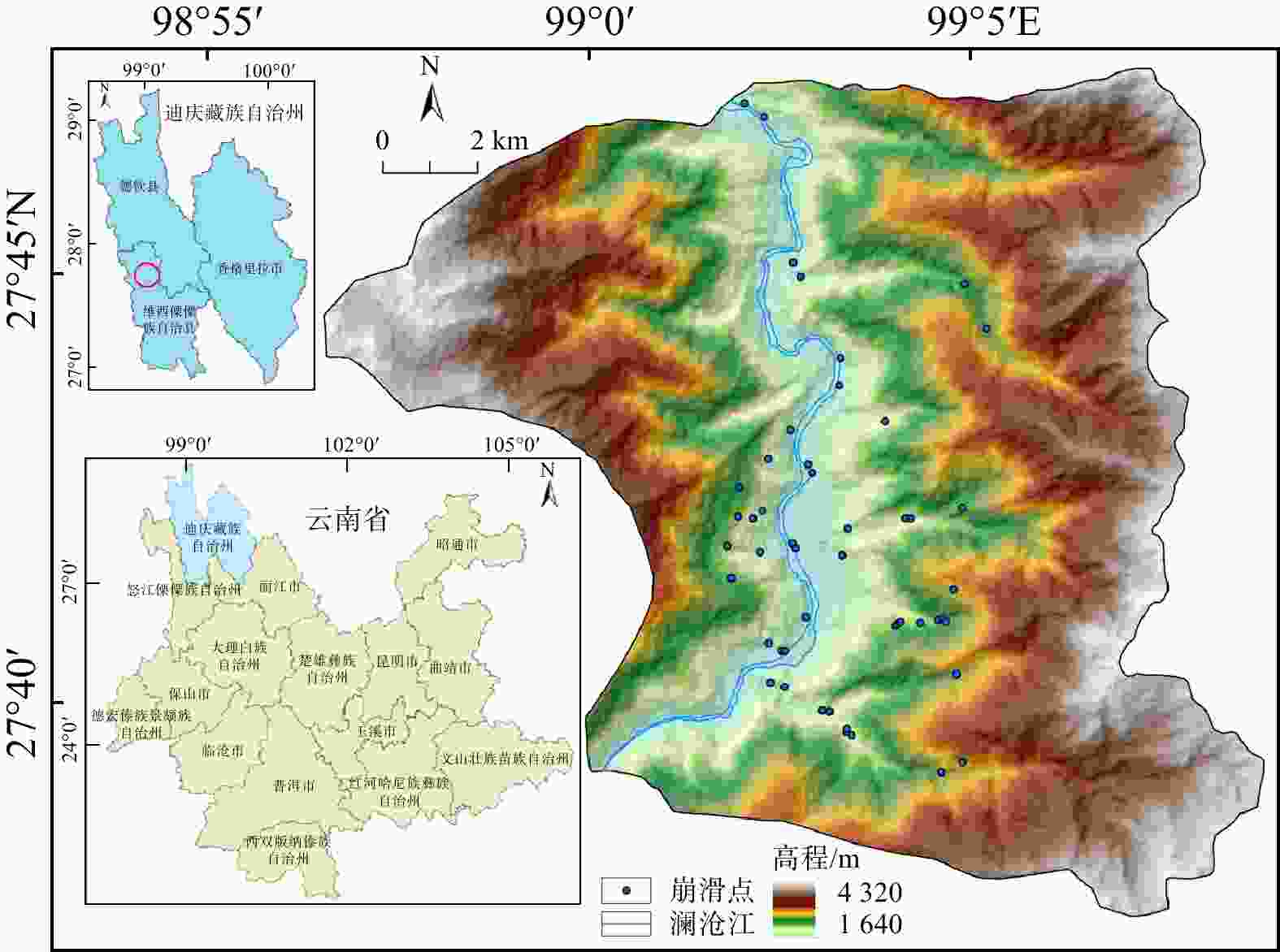
 下载:
下载:
